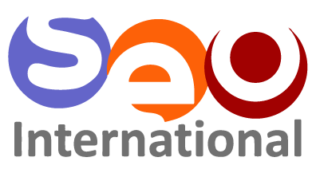How Internal Links and Footers Improve Your Website SEO
Walk through any successful business website in Dubai — whether it’s an online store in Dubai Marina or a digital agency in Business Bay — and you’ll notice one thing they all do well: every page connects seamlessly to another. You can move from a product to a category, a service page to a case study, or from a blog to a contact form — without ever feeling lost.
That invisible web of links is called internal linking, and it quietly defines how search engines and users experience your website. Alongside it, your footer section — often overlooked — plays a surprisingly powerful role in boosting visibility, engagement, and conversions. Together, these two elements set the “flow” of your site and help Google understand what really matters on it.
Why Internal Linking Matters — in Dubai and Beyond
In Dubai’s fast-growing digital economy, businesses compete not only on products but on how easily people can find and navigate their websites. From real estate companies in Jumeirah to e-learning startups in DIFC, internal linking determines how effectively your website passes “SEO value” across pages.
Globally, Google uses internal links to map relationships between pages. The more logically connected your site is, the easier it becomes for Google to rank your core content. Locally, this is even more crucial — because Dubai and GCC audiences search in multiple languages (English, Arabic, Hindi), making structured navigation essential for both user experience and multilingual SEO.
A well-linked website is like a well-planned city: every road leads somewhere, and visitors always know where they are.
Breadcrumb Navigation: The Map Your Users Need
Think of breadcrumb navigation as your website’s GPS. It shows users exactly where they stand and gives them a clear route back home.
For example, if someone is browsing your Google Ads course under the Digital Marketing Courses section, the breadcrumb might look like:
Home > Digital Marketing Courses > Google Ads Course
This not only helps users retrace their steps but also signals to search engines how your content hierarchy is structured. Every time a breadcrumb link connects subpages back to your main categories, it reinforces your website’s topical relevance.
For example, a visitor exploring a “SEO Course in Dubai” page can instantly return to “Marketing Courses” or “All Courses” through breadcrumbs, improving navigation flow — and ultimately increasing conversions.
Footer Links: The Unsung SEO Hero
Scroll to the bottom of any strong-performing website, and you’ll notice the same pattern: an informative, well-structured footer. This space isn’t just decorative — it’s a strategic SEO tool.
Here’s how to make it work for you:
1. Write a Compact “About” Section
Add a short paragraph (2–3 lines) summarizing who you are, what you do, and since when.
Example:
“Founded in 2000, SEO International provides digital marketing and AI training to businesses and professionals across Dubai, GCC, and beyond.”
Blend in a primary keyword like Digital Marketing Training UAE or AI Courses in Dubai naturally.
2. Link to Key Pages
Use headings such as Explore, Main Pages, or Popular Categories. Include 5–10 important links that represent your website’s main sections — such as Services, Courses, Blog, and Contact.
Even if your site has 500 pages, these footer links “empower” your core pages because every single page connects back to them. This improves both crawlability and ranking potential.
3. Add Local Contact Details
List your Dubai phone number, WhatsApp link, and email. If you serve multiple regions, specify them — e.g., Dubai | Abu Dhabi | Riyadh | London — to help Google associate your business with local intent.
4. Include Social Media Links
Footer social icons build credibility and help users explore your brand further — while adding another subtle layer of interlinking.
Internal Linking Within Content: Blog Posts, Services & Product Pages
Every blog post or service page on your website should act like a “mini hub.” When you mention related services, link to them naturally.
For example, a blog titled “How AI Is Changing Marketing in 2026” could link to AI Courses in Dubai or Digital Marketing Training UAE. This helps Google connect that blog’s content to your main offerings — and helps readers take action faster.
Similarly, if you’re describing a specific product, you can link to relevant category or collection pages. This not only empowers your main pages but also enhances the user journey — keeping visitors on your site longer.
And don’t forget cross-linking between blogs. Linking one blog to another related post encourages readers to continue exploring, reducing bounce rates and increasing engagement time — both of which send positive signals to search engines.
Pro Insights from SEO Experts
According to Semrush, one of the biggest internal linking mistakes is allowing your key pages to get buried too deep in your website structure. Pages that are more than three clicks away from your homepage lose significant link equity. To fix this, ensure your most important service or product pages — such as “AI Courses in Dubai” — are easily accessible through your main navigation, breadcrumbs, and footer.
Backlinko also emphasizes using natural, varied anchor text. Over-optimizing with the same keyword anchor text can appear manipulative. Instead of repeating “AI Courses in Dubai” across every link, use descriptive phrases like “Explore our beginner-friendly AI courses in Dubai” or “Learn AI skills online with our Dubai-based workshops.”
Finally, Yoast highlights the danger of orphan pages — pages with no internal links pointing to them. These pages are invisible to Google’s crawlers and often underperform in rankings. Use an internal link audit tool to identify orphan pages and connect them to relevant content hubs or blog articles.
A recent SEMrush study found that internal links are one of the top five on-page SEO factors contributing to higher rankings. Meanwhile, HubSpot reports that websites with a clear linking structure see up to 40% longer average session durations.
Locally, a Statista 2024 UAE Digital Study revealed that 75% of users prefer websites that offer clear navigation and fast access to key information. This means an intuitive layout, supported by strong internal and footer links, directly impacts your conversion potential.
In short, better linking equals better performance. Both for Google and for your customers.
Common Mistakes to Avoid
- Overlinking: Avoid stuffing multiple links in every sentence. It confuses both users and Google.
- Broken Links: Regularly check and update internal links, especially after URL changes.
- Irrelevant Links: Only connect pages that are contextually related.
- Neglecting New Pages: Whenever you add a new service, product, or blog — make sure it’s linked from relevant existing pages.
- Ignoring Depth: Keep your main pages close to the homepage (within three clicks) as recommended by Semrush.
- A consistent internal linking review every few months can make a noticeable difference in your site’s visibility.
Behind the Strategy: Why It Works
Search engines crawl your site through these internal links. Each link acts like a “vote of importance” for another page. The more quality links pointing to a page, the more authority it gains.
In a way, you’re creating your own web of backlinks — but internally. Unlike external links, these are 100% in your control. That’s why smart marketers treat internal linking as a continuous, long-term SEO investment.
Where You Can Begin
If you want to turn your website into an SEO-friendly ecosystem — where every click counts and every link has purpose — start with your internal structure. Revisit your breadcrumbs, optimize your footer, and weave relevant internal links into your blogs and service pages.
At SEO International, we help professionals, entrepreneurs, and corporate teams across Dubai, GCC, and worldwide master these strategies. Through our AI Courses in Dubai and Digital Marketing Training UAE, you’ll learn how to build content structures that not only improve rankings but also drive real business growth.
Whether you prefer joining our group workshops at JW Marriott Hotel, Dubai Marina, attending custom in-house training sessions, or learning from anywhere via Google Meet AI workshops, our programs are designed for beginners and professionals alike.
Because great SEO isn’t just about content — it’s about how everything connects.



